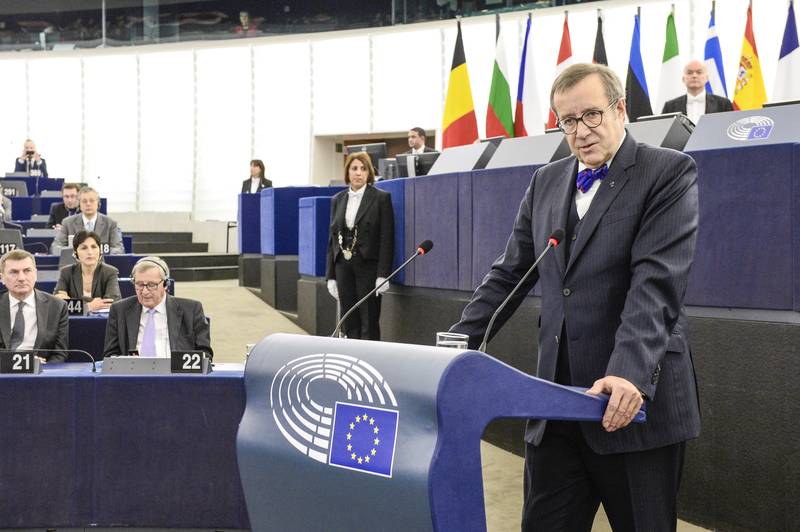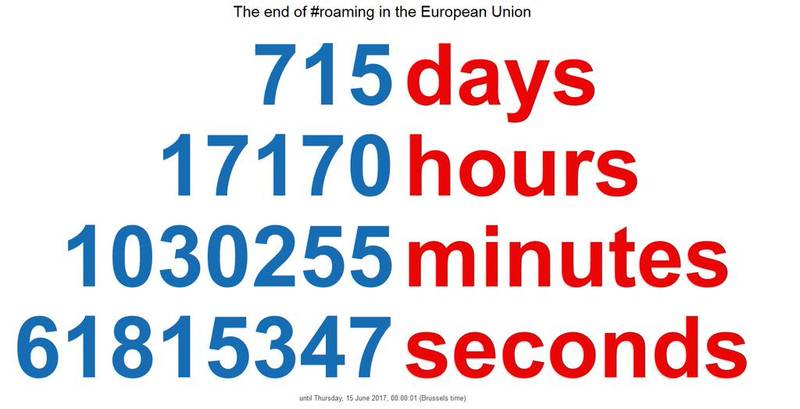The Time of "Cheap" Economic Growth is Over
Adelina Marini, February 8, 2012
 If something has become painfully clear in the last few years, regarding the global financial and economic crisis and its consequences, it is that the time of cheap economic growth is over. It is time for growth, generated by hard, highly educated and highly technological labour. Whoever will lead in this relatively new area, will be an economic leader with all the accompanying such a leadership welfare like prosperity, dropping unemployment and political boon. As will become clear from the data below, the race is already at its height.
If something has become painfully clear in the last few years, regarding the global financial and economic crisis and its consequences, it is that the time of cheap economic growth is over. It is time for growth, generated by hard, highly educated and highly technological labour. Whoever will lead in this relatively new area, will be an economic leader with all the accompanying such a leadership welfare like prosperity, dropping unemployment and political boon. As will become clear from the data below, the race is already at its height.
The European Union has been repeating as a mantra for a long time that the key to generating economic growth in times of a crisis and budget austerity is hidden in, at least, keeping the spending for higher education, science, research and development (R&D). And the results, shown on February 7th by the European Commission about how the member states performed in that area in 2011, are unequivocal.
According to the scoreboard, the 27 member states are divided into four groups: innovation leaders, innovation followers, moderate innovators, modest innovators. Probably it is not a surprise which are the countries in these groups:
- innovation leaders: Sweden, Denmark, Germany, Finland, which perform much above EU27 average;
- innovation followers: Belgium, UK, the Netherlands, Austria, Luxembourg, Ireland, France, Slovenia, Cyprus and Estonia which are close to the EU average;
- moderate innovators: Italy, Portugal, the Czech Republic, Spain, Hungary, Greece,  Malta, Slovakia and Poland, which perform below the average;
Malta, Slovakia and Poland, which perform below the average;
- modest innovators: Bulgaria, Romania, Latvia and Lithuania with much below EU average scores.
As Industry and Entrepreneurship Commissioner Antonio Tajani explained, the results in the latter group do not necessarily mean that the countries in it do not invest much efforts in boosting innovation. On the contrary. He also noted that there was no common recipe to achieve desired results. What is the common thing, though, is investments in education, science and R&D. From the Commission's report, presented in December 2011 about the State of the Innovation Union, it becomes clear that there are countries which, in spite of the budget cuts, not only that they did not reduce their spending for education and science but they even increased it. For example, France is investing additionally 21.9 bn euros in its initiative "Investment for the Future" for the period 2009-2014, which is directly related to higher education and research.
And Germany has committed to increase the budget of research and education by 12 bn euros in the period 2010-2013. Slovenia is acting really "smart" by increasing the budget for research through the EU structural funds.
If we judge by the Eurostat data, there is a clear link between investment in education, R&D and economic growth. The data are from 2010 and show that the countries with higher percentage of their GDP investments in innovation and education were much more resilient to the crisis in Europe and even scored growth. Leaders in this scoreboard are the usual suspects - Sweden, which sets aside 3% of its GDP to boost investments in education and had growth of nearly 6% in 2010. Finland also invests more than 3% of its GDP, which pays back with 3% growth. Among the leaders are also Germany, Denmark, Austria, Belgium, the Netherlands, UK, France, etc., which also had growth, although in various size.
The main indicators, used when comparing the member states in the Innovation Union, are divided into three main categories: "enablers", covering the environment that allows for the realisation of innovation (mostly human resources, open research systems, funding and support); "firm activities", covering the innovation efforts of European firms (firm investments, linkages with entrepreneurship and intellectual assets); "outputs", which show the benefits for the economy in general from the invested in its innovative solutions.
 Another important thing, these results show, is that the most innovative countries share several strong indicators in their national research and innovation systems, as a major role play the business activities and public-private collaboration. For example, the leaders - Sweden, Denmark, Germany and Finland - perform very well in Business R&D expenditure. Besides, most leaders focus very much on the development of human resources. They also have higher than the average results in the public-private co-publications, which suggests that they have well established linkages between the scientific base and enterprises. The most innovative countries excel in commercialising their technological knowledge, which is being demonstrated by the quality of patents and patent revenues abroad.
Another important thing, these results show, is that the most innovative countries share several strong indicators in their national research and innovation systems, as a major role play the business activities and public-private collaboration. For example, the leaders - Sweden, Denmark, Germany and Finland - perform very well in Business R&D expenditure. Besides, most leaders focus very much on the development of human resources. They also have higher than the average results in the public-private co-publications, which suggests that they have well established linkages between the scientific base and enterprises. The most innovative countries excel in commercialising their technological knowledge, which is being demonstrated by the quality of patents and patent revenues abroad.
What is typical for the moderate and modest innovators is that they have unbalanced research and innovation systems. These are the countries that at the moment endure severe economic difficulties and are generally in Europe's periphery (not all of them), as well as some of the newest EU member states, which joined the Union economically quite underdeveloped. The scoreboard also shows that these two groups of countries have very small shares of small and medium sized enterprises (SME) as being the sources of innovation. It is noted, however, that precisely these countries score the highest growth of efforts in stimulating innovation, which means a process of catching up. Bulgaria is indicated a leader among the catching-upers, seconded by Estonia.
Although the Commission is interpreting the results of the worst performing group of countries as a sign of convergence, the 2011 report says that there is a clear risk of innovation division among the member states. In the document it is recommended the modest innovators to keep up with their bearing positive results commitments and to increase their spending for science and R&D, as far as they can afford it.  Commissioner Tajani stressed that, in spite of the shortage of money because of the austerity measures in many nations, access to credit for innovation is difficult. The financial instruments are not being used sufficiently like, for example, venture capital funds.
Commissioner Tajani stressed that, in spite of the shortage of money because of the austerity measures in many nations, access to credit for innovation is difficult. The financial instruments are not being used sufficiently like, for example, venture capital funds.
In the same time, the report notes, the transfer of economic power from the West to the East is accelerating. Europe's performance in terms of R&D and innovation is in decline in the past years, thus widening the gap with the global leaders - the US and Japan. Moreover, the document says, China, India and Brazil are quickly catching up with the EU, improving their performance by, accordingly, 7%, 3% and 1% on a year to year basis for the last 5 years. These data are especially telling, given that a global battle for growth is looming, against the backdrop of the growing levelling of playing field.
The Innovation Union is one of the main pillars of the current 10-year strategy of the EU for economic growth and jobs Europe 2020. In it the Commission has set a target of spending for education, R&D and science at 3% of gross domestic product.
 Toomas Hendrik Ilves | © European Parliament
Toomas Hendrik Ilves | © European Parliament | © European Commission
| © European Commission | © European Union
| © European Union | © euinside
| © euinside | © EU
| © EU | © EU
| © EU